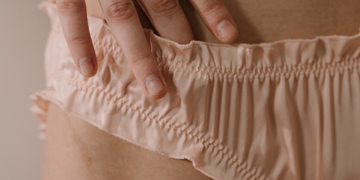Bacterial vaginosis vs. yeast infections

How can you tell the difference between a yeast infection and bacterial vaginosis (BV)? Let’s explore what BV is in comparison to yeast infections. We’ll define BV by discussing its signs and symptoms, causes and treatment methods, and how to tell whether the infection is gone.
Bacterial vaginosis or yeast infection?
Yeast infections and BV upset the natural balance of your vaginal microbiome in different ways. Bacterial vaginosis is caused by the overgrowth of bacteria, whereas the overgrowth of yeast leads to yeast infection. It can be challenging to know which vaginal infection you have because some of the symptoms overlap.
We suggest contacting your primary care provider and getting tested if you think you have a vaginal infection to avoid self-treating for the wrong condition and possibly causing further problems.
What is bacterial vaginosis?
BV (like yeast infections and some STIs) is a type of vaginitis. Vaginitis is inflammation of the vagina that can sometimes be caused by infection. At its core, bacterial vaginosis is an infection caused by the overgrowth of bacteria in your vagina. You can help the diagnosis process by noting which symptoms you’re experiencing.
Bacterial vaginosis symptoms
Like with yeast infections, BV can lead to vaginal itching and a burning sensation when you pee and in your vagina. Since yeast infections and bacterial vaginosis have similar symptoms, how can you tell the difference between them?
There are differences in discharge and odor that can help differentiate between the two. With a yeast infection, discharge can be white and odorless and may have the consistency of cottage cheese. Bacterial vaginosis usually causes a thinner discharge (possibly with a “fishy” odor) that’s gray, white, or green. It’s possible to have both a yeast infection and BV at the same time.
Shop the article
Causes of bacterial vaginosis
There are a few different things that can lead to the overgrowth of bacteria and the development of BV. Some of the risk factors include: having multiple sexual partners, changing to a new sexual partner, frequent douching, changes in hormonal balances (such as pregnancy), and a low volume of lactobacilli bacteria.
We do know that low amounts of lactobacilli (which is considered “good” bacteria) might be a natural occurrence and makes you more susceptible to other vaginal infections as well. You can reduce your chances of getting BV by:
- Avoiding douching
- Using only warm water and mild, unscented soap to clean your vulva
- Using condoms for all sexual activity (including oral and anal)
- Wiping front to back after using the toilet
Treatment for BV
BV is treated with antibiotics, either orally or as a topical cream or gel. Over-the-counter alternatives are available, but some of these options might not be as effective. Whichever treatment you use, read instructions and warnings carefully.
It’s important to avoid alcohol when you’re taking antibiotics, and keep in mind that certain medications may weaken rubber condoms, so additional precaution if wanting to prevent pregnancy may need to be taken. Bacterial vaginosis can recur within 3-12 months, even after treatment.
If BV recurs, we suggest chatting with your primary care provider about ways to handle it. Long-term antibiotic therapy is one option.
Alternative treatments
Lactobacilli (the “good” bacteria found in your vagina) produces hydrogen peroxide. By increasing the acidity of your vaginal microbiome, hydrogen peroxide discourages the growth of harmful bacteria. More research is necessary to figure out whether alternative hydrogen peroxide treatment methods are safe.
Probiotics are also being explored as a treatment for BV. Although study results aren’t conclusive, they suggest probiotics might be beneficial alongside other treatments. There seems to be a positive correlation between some probiotics and the prevention of BV. More research on individual probiotics can help us understand which strains are beneficial and how much you need to get results.
Boric acid is another treatment option that could benefit from further research. If you’re considering alternative treatments and prevention methods, we suggest asking your primary care provider for advice.
BV prevention
Prevention against infection can start with good hygiene practices, including gently washing the area around your vagina daily with unscented soap. Since vaginal infections, like BV, can be influenced by hormones, it can be challenging to avoid infection entirely.
Using an IUD, particularly when you experience irregular bleeding, has been associated with cases of BV. The strength of this link (whether it’s a direct cause) remains unclear, but removing the IUD has the potential to lower your risk of getting recurrent BV. If you are concerned that IUD placement may be causing BV, it is very important to speak to your primary care provider or OBGYN about it.
How do you know BV is gone?
Sometimes bacterial vaginosis clears up on its own, but it’s beneficial to contact your primary care provider if you have any symptoms as most cases require antibiotics to be completely resolved. Bacterial vaginosis while pregnant or if left untreated can lead to complications in pregnancy or make you more susceptible to STIs.
Most treatments last for 5-7 days, though symptoms may stop bothering you within 2-3 days. Make sure to complete the cycle, even if symptoms have cleared, to reduce the chance of the infection recurring. If you’re pregnant or are still experiencing symptoms after a round of treatment, you might want to have a follow-up visit.
If you think you have any type of vaginal infection, we suggest getting in touch with your primary care provider for a diagnosis.
Keep Reading

How do yeast infections affect sex?
Sep 19

What your vaginal discharge is trying to tell you
Nov 10

What’s the deal with pregnancy and yeast infections?
Jul 15









